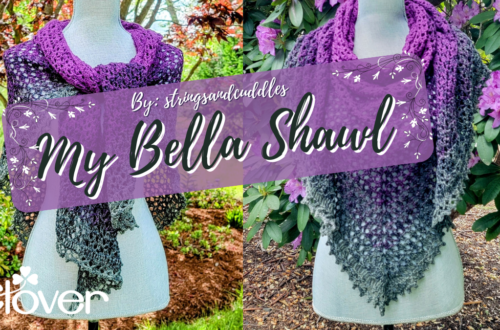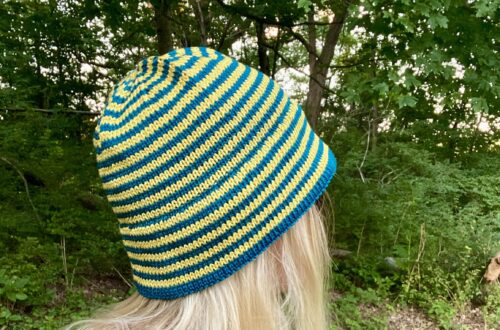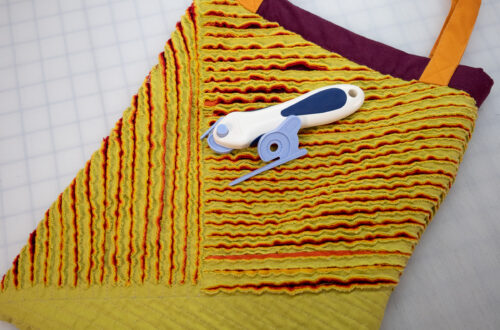Tools and Tips For Foundation Paper Piecing
Hi and welcome to the kickoff of our September Sewing Month! My name is Faith, I am a contributor to Clover as well as a quilt maker and mother to three boys and two huskies. You can follow me and see more of my creativity at @faithessenburg I hope you join us this month in doing the thing we love which is using needle and thread to create beauty, and I know for myself when I am creating it’s also bringing my heart and mind peace and joy. This month I will be focusing on finishing up or working more on my stack of WIPs (works in progress) and I will be sharing some of that here with you. Today, I am sharing my tips and the tools that I use for FPP (foundation paper piecing). I’ve pulled out a WIP from 2018 and have started plugging away at more blocks for this quilt. I don’t have a deadline for this one since it’s just something I started for fun and have added to it little by little over the years and have slowly collected fabrics for it. It’s just one of those pure joy projects that I think is important to keep around for when you just need some happy sewing. The envelope pattern I’m using is from the beautiful book Patchwork Please and the fabrics are from Sunny Day Supply.

What you will need for FPP:
- Printed out or copied foundation paper piecing pattern (I recommend starting with a simple pattern like this one)
- Small ruler
- Rotary cutter- Art No. 7501 (I like this smaller one for small projects)
- Roll & Press- Art No. 7812
- Tracing Wheel- Art No. 480/W
- Seam Ripper- Art No. 482/W
- Mini Scissors- Art No. 493/CW
- And of course, fabrics that make you happy.

If you have never tried Foundation Paper Piecing, it can take a little practice to get comfortable with it, for me the most helpful step to a good FPP experience has been working with a simple pattern AND always tracing the sewing lines of the pattern with a tracing wheel first, going over them a couple times back and forth. My friend Jenni showed me how to do this and it really helps the paper tear away cleanly when you are finished sewing. Use a small ruler to keep your tracing lines straight.


If you have a fussy cut center for your FPP block you can cut out the center of your pattern and use it as a template for getting that fussy cut center just right. For the rest of my fabric pieces, I have cut out rough sizes and shapes being generous with my cutting, knowing that FPP will “waste” more fabric than patchwork sewing does.


Starting with your two first pieces (which should be marked 1 and 2), place the fabrics on the blank side of the paper, and hold the paper and fabrics up to the light to see that seam allowance and placement are centered and on the right lines. Having the dotted traced lines helps with placement too. Sew pieces together using a 1.90 stitch length (a smaller setting helps with tearing the papers out cleanly at the end). Turn the paper over and press the seam open using your seam roller. As you add pieces 3,4,5 and so on you will need to fold your paper over at the dotted lines and using a 1/4 seam marked on a ruler trim your fabrics using the rotary cutter to keep the bulk of the block down as shown above.


The back of your paper will look like this with the traced lines and thread sewn on when you finish. It can take a bit to get used to this backward sewing where you flip your paper over to check your work but it is a lot of fun, especially working with a simple block like this one. Another trick I learned is to use my seam ripper blade between the fabric layers when I make a mistake that needs to be taken out. I place the block on a hard surface and hold tight with my left hand and slowly slide the seam ripper between the fabrics. This works especially well when using the smaller seam length as we do here.


This last step to me is so satisfying, when you are ready to pull the papers out work backward with the last number on your pattern folding the paper back and pressing it to smooth it, carefully tear away from one end to the other. Continue until all papers are removed. Press your block using an iron and you are all set!


FPP is a form of sewing that reminds me of crafting as a child, it uses paper and scissors and has simple steps that make something fun to work on each step of the way and although I have never gotten into more complicated patterns, I have been happy with the simple ones I have worked on because sometimes the best sewing/creating is the more simple work that brings peace and joy. For me, that is ALL that sewing has been about, an outlet for stress, a way to slow down in this busy life and get back to creating things we love. This quilt is a long-haul project for me, something to pull out every year and add to with newfound fabrics and when it seems ready to be finished, there will be hand quilting to enjoy for months.

I hope you join us over the month of September in making time to work on sewing in whatever way suits you best. It’s a perfect time of year to slow down a bit, take stock of what projects need to be worked on, finished up or maybe even scrapped if they no longer bring happiness. I will be back later in the month to actually finish up a couple quilts and I look forward to sharing more.

Faith
Stay connected with Clover on Facebook | Twitter | Instagram | Pinterest | YouTube | Ravelry


